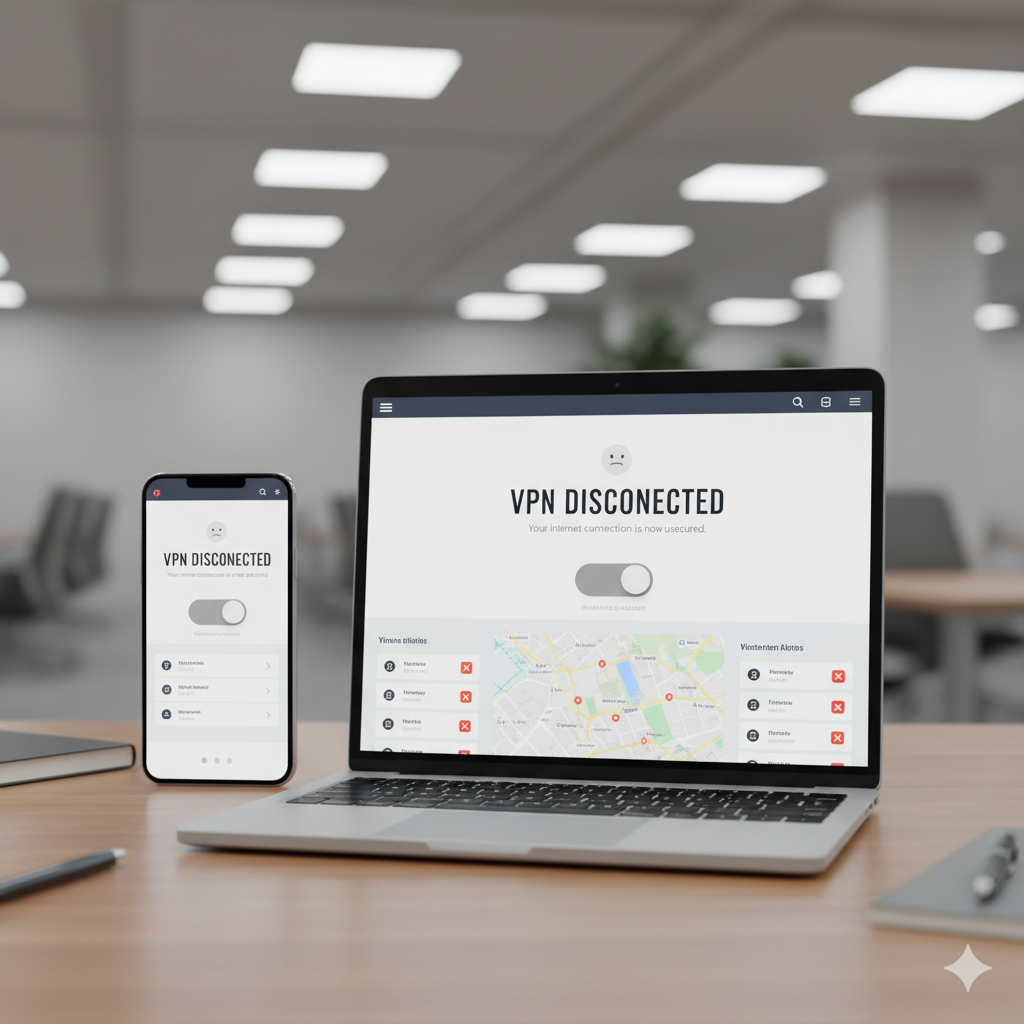Disabling a VPN can be a necessary step for IT managers, network engineers, and cybersecurity professionals when troubleshooting network issues, testing connectivity, or complying with certain organizational policies. Understanding how to disable a VPN properly ensures minimal disruption and maintains network security while addressing operational requirements. This article provides a detailed guide on how to disable VPN across multiple platforms and scenarios.
What does “how to disable VPN” mean for different operating systems?
Disabling a VPN involves stopping the VPN client or removing a VPN profile temporarily to restore direct internet connectivity. On desktop systems like Windows, macOS, and Linux, it generally requires either disconnecting via the VPN client application or disabling system-level VPN profiles. On mobile devices, VPNs are often integrated into the OS, necessitating manual toggling or removal from device settings. The process ensures traffic bypasses encrypted tunnels, which can affect latency-sensitive applications like video streaming or VoIP (source: TechRadar).
How can you disable a VPN on Windows, macOS, and Linux?
Windows
On Windows 10 and 11, navigate to Settings > Network & Internet > VPN. Select the active VPN and click Disconnect. For system-wide VPN clients such as NordVPN or ExpressVPN, exit the application completely or disable auto-connect options to prevent automatic reconnection (source: TechRadar).
macOS
macOS users can access System Preferences > Network, select the VPN profile, and click Disconnect. Advanced users managing corporate devices via MDM can also temporarily disable VPN using profile restrictions, which is useful for troubleshooting enterprise network access (source: Kaspersky).
Linux
Linux systems often rely on terminal commands or NetworkManager. To disable OpenVPN, use:
sudo systemctl stop openvpn-client@client.service
Alternatively, NetworkManager GUI allows users to disconnect from active VPN connections without terminal access.
How do you disable a VPN on mobile devices like Android and iOS?
Android
Navigate to Settings > Connections > VPN, select the active VPN, and tap Disconnect. Some VPN applications also feature persistent notifications or always-on mode that must be manually disabled to stop automatic reconnection. For corporate-managed devices, disabling a VPN may require admin approval or MDM intervention.
iOS
On iPhones or iPads, open Settings > General > VPN & Device Management. Toggle the VPN switch to Off or remove the configuration profile entirely for permanent removal. Always-on VPNs may require profile deletion to fully disable connectivity. For reference, Apple’s device management documentation provides authoritative guidance (source: Wikipedia).
When should you disable a VPN and what are the security trade-offs?
Disabling a VPN is appropriate when troubleshooting connectivity issues, bypassing geo-restrictions temporarily, or conducting network performance tests. However, turning off a VPN removes the encryption layer, exposing traffic to ISPs and potential interception. For sensitive operations, it is crucial to evaluate risk before disabling VPN connections. Professionals often toggle VPNs selectively, ensuring critical endpoints remain protected even during testing.
How can network administrators disable or restrict VPN access across enterprise endpoints?
Network administrators can enforce VPN restrictions using firewall rules, endpoint management software, or group policies. For Windows environments, Group Policy Objects (GPOs) can block VPN client execution or restrict specific protocols. MDM solutions on macOS, Android, and iOS allow centralized management of VPN profiles, including disabling always-on or auto-connect features. These measures ensure compliance while retaining operational control over traffic flows (source: Cloudflare Learning).
Constraints and performance:
Disabling a VPN may impact network routing, DNS resolution, and access to geo-restricted resources. Performance implications include potential latency reduction but also exposure to throttling by ISPs. Device-specific limitations exist: older operating systems may not fully respect VPN toggles, requiring manual client shutdown. Enterprise environments may introduce additional constraints due to firewall policies or split-tunnel configurations. Always test connectivity post-disabling to verify expected performance and security posture.
Conclusion
Knowing how to disable VPN across platforms is essential for IT professionals managing connectivity and security. Properly disconnecting VPN clients or profiles ensures uninterrupted network testing and operational flexibility while balancing security considerations. For enterprise scenarios, centralized controls provide safer management of VPN access without compromising organizational policies.
AirVPN vs NordVPN: Which VPN Offers Better Security & Speed?



